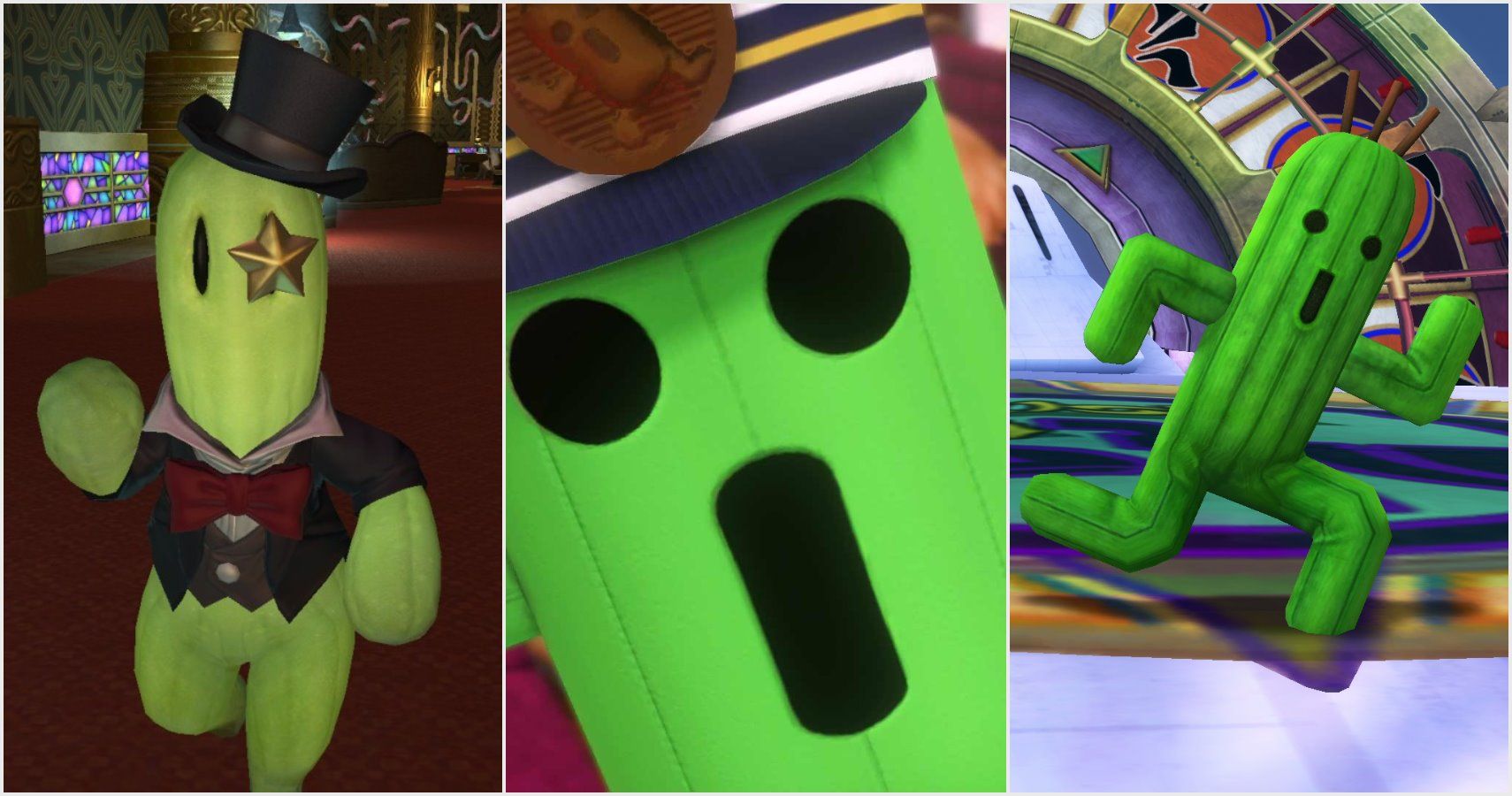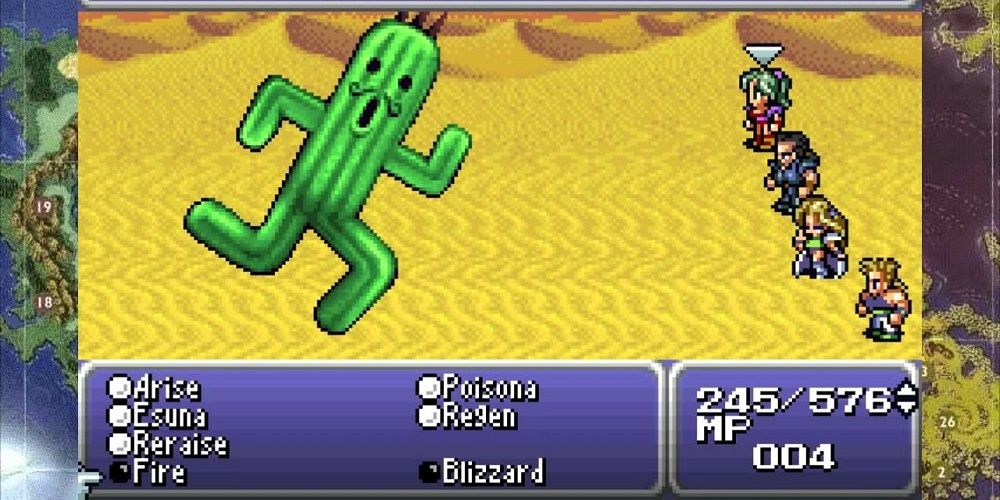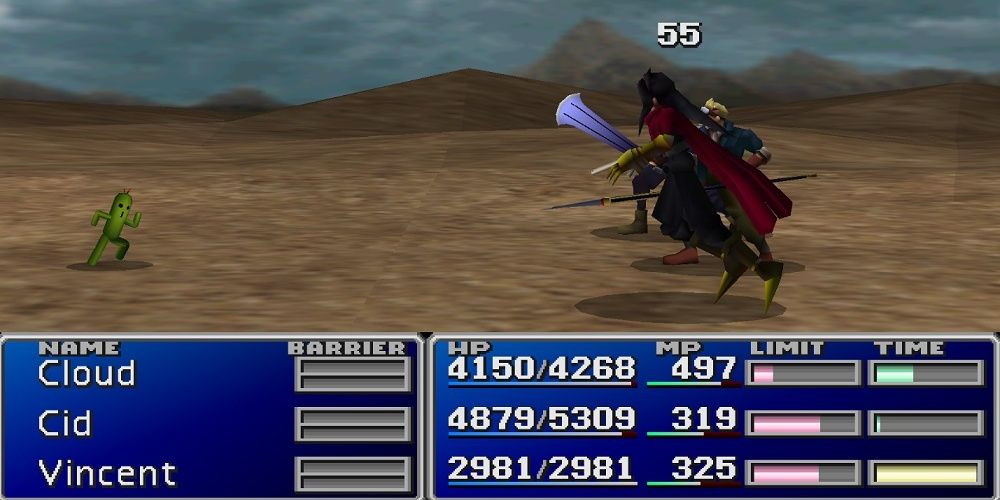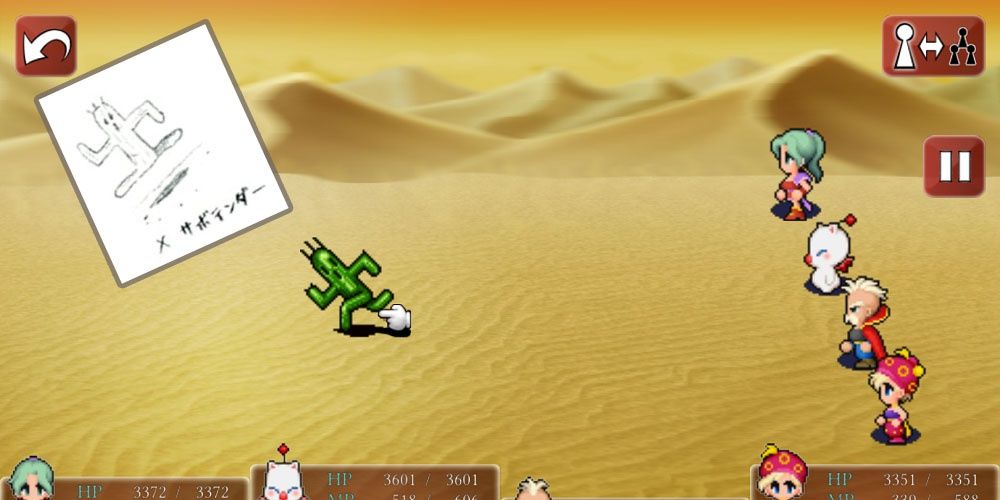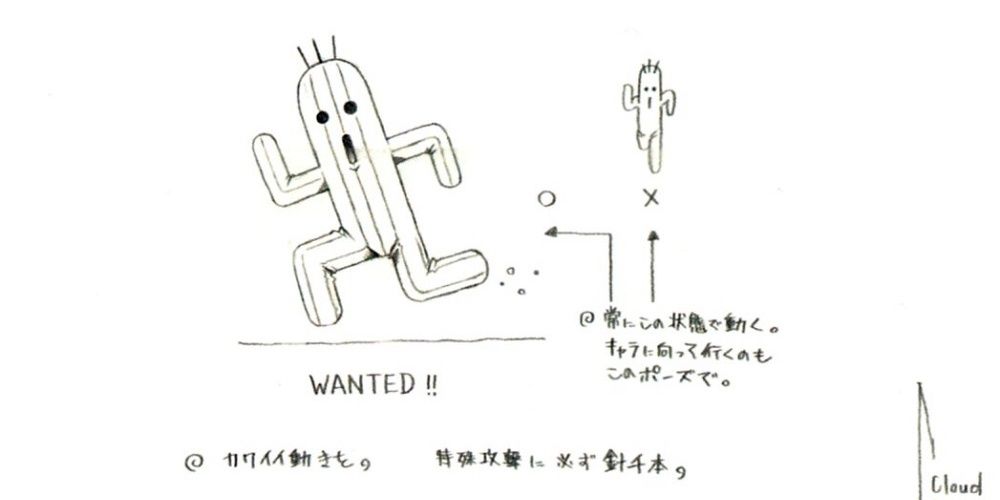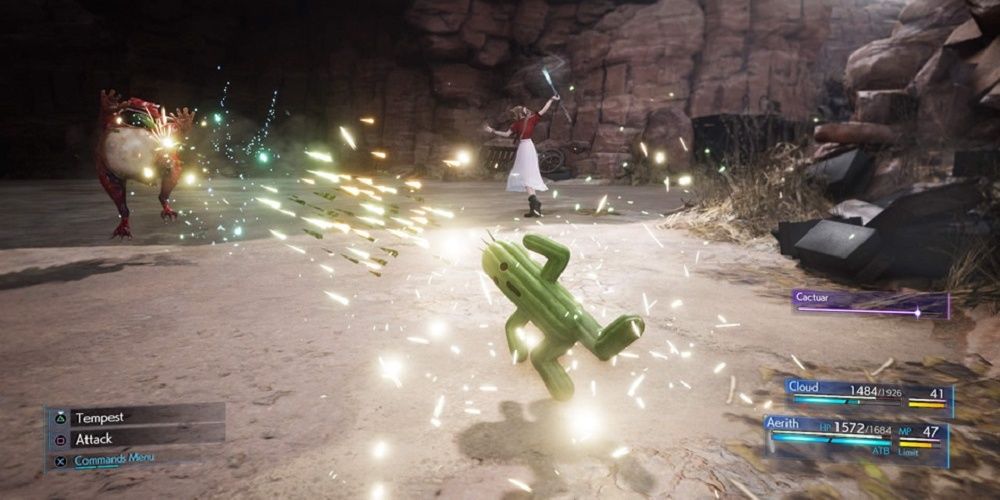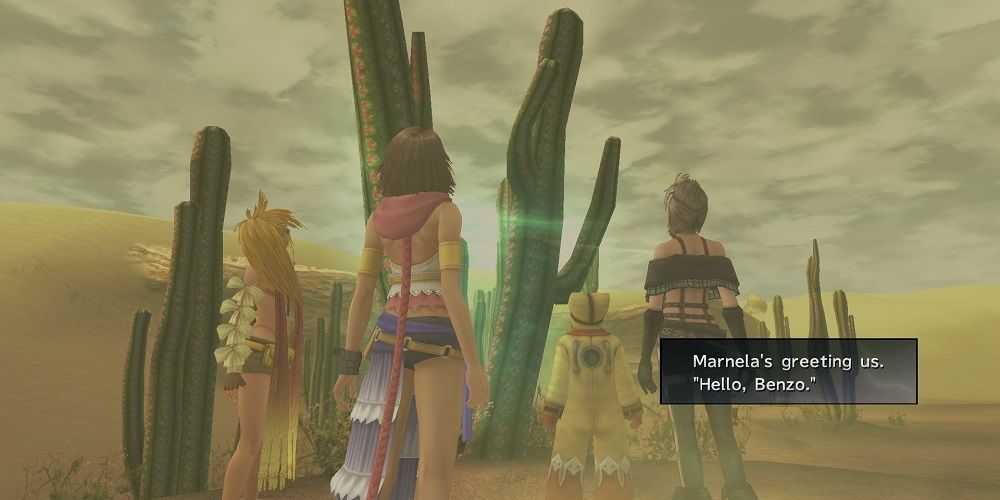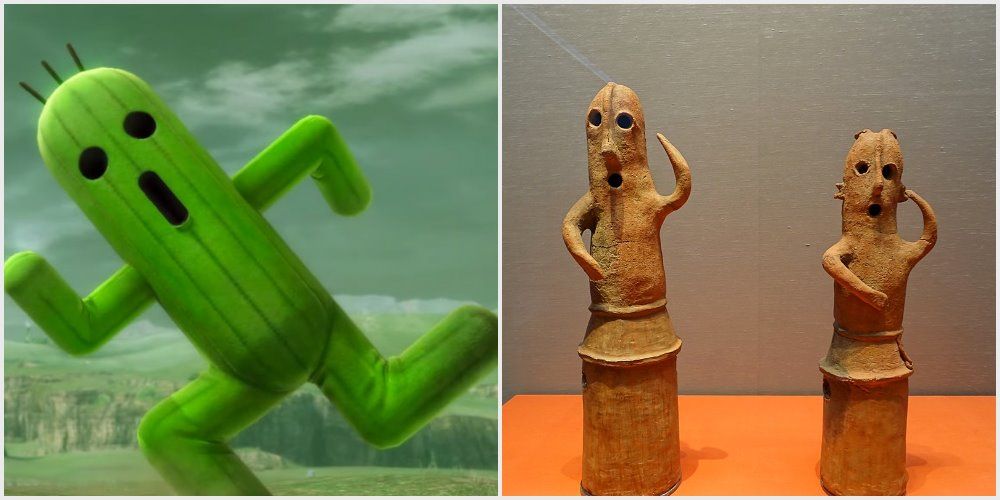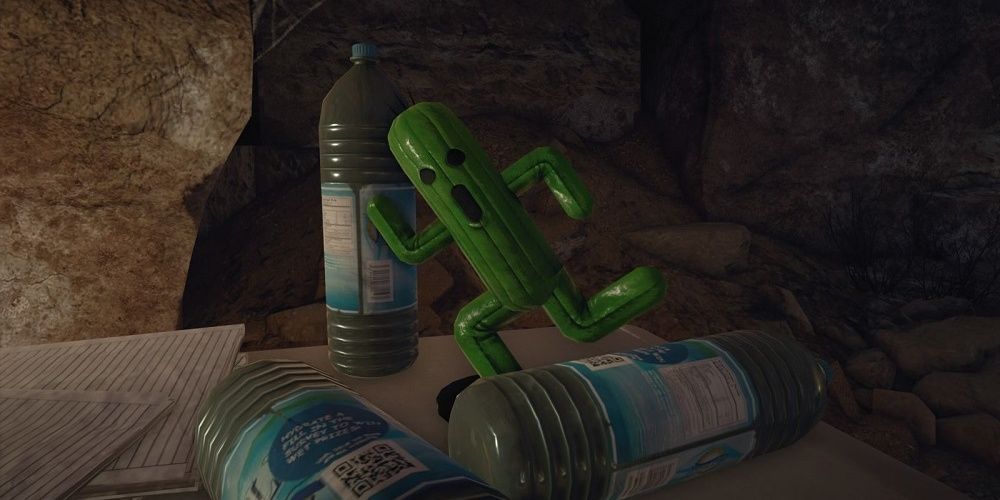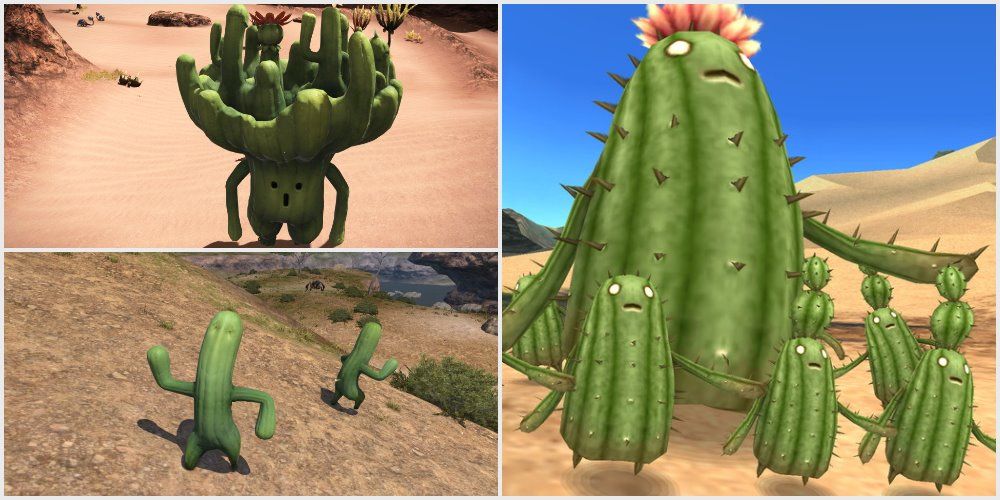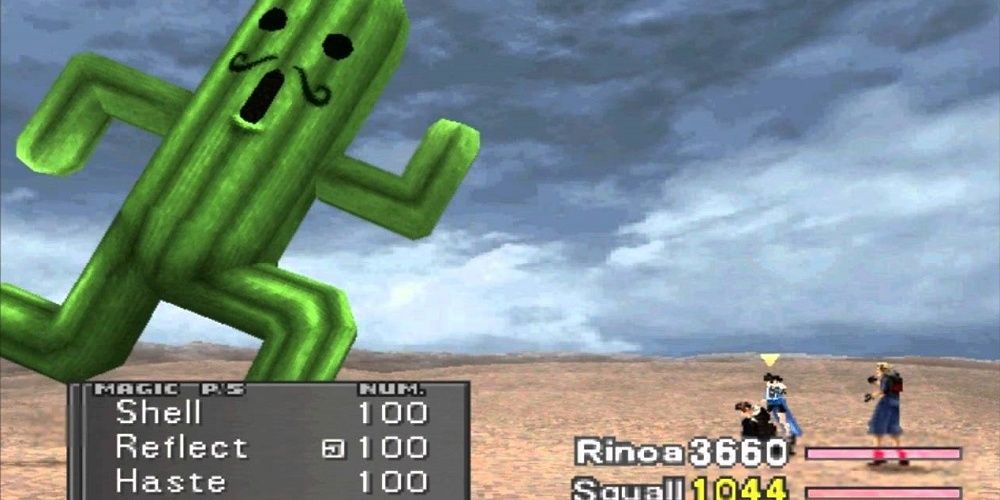When it comes to the Final Fantasy franchise there are certain elements that have become staple features of the games, including recurring themes, summons, certain enemies, creatures, and mini-games. Some elements have become so synonymous with the series that they basically become mascots, such as chocobos, moogles, and of course, cactuars.
These little green cactus-looking critters have become fan-favorites and players love to see them appearing in the games. While they might be an instantly recognizable part of this prestigious franchise, there's bound to be a thing or two that you didn't know about cactuars, so let's fill you in!
10 First Appearance
Cactuars first appeared in Final Fantasy 6 and quickly won the hearts of fans. Although its mustached relation, the gigantuar/jumbo cactuar enemy, didn't make an appearance until Final Fantasy 8, it was added into the Advance and mobile versions of Final Fantasy 6 as a boss. This boss can only be fought once the player has defeated ten cactuars.
Cactuars are extremely fast enemies who can deal some serious damage with their 1000 Needles move. In later games, this move was upgraded to 10,000 Needles and the gigantuar bosses earned themselves a special 99,999 Needles move. Ouch.
9 Name Change
While players know this spikey little guy as "cactuar", originally his name was actually different. In Final Fantasy 6 they were actually "cactrocts" before being changed to "cactuer" in Final Fantasy 7. It was actually the fake version of this enemy that first went by the name "cactuar" in Final Fantasy 7, purposefully similar to the legitimate version's name.
This fake type was weaker and found in a different area than the real ones. After Final Fantasy 7, "cactuar" became the default name for the normal variant of this particular enemy and his previous names were all but forgotten.
8 Design
Cactuar was designed by Tetsuya Nomura and was reportedly based on a drawing he had once doodled on a notebook at school. Nomura is best known for being one of the main character designers of Final Fantasy 7, but he actually began work with Square Enix (known as Square Co. Ltd at the time) as a debugger for Final Fantasy 4.
He then moved to monster design for Final Fantasy 5, before becoming the graphic director for monster designs in Final Fantasy 6 and creating the green cactus monster that would go down in Final Fantasy history.
7 Origin of Name
In Japan, its name is "sabotenda," created by mixing the Japanese word "saboten" (cactus) with the English word "pretender." The Japanese fake cactuar was called "sapotenda."
Likewise, the cactuar, or cactuer as it began, likely had its name chosen because of its resemblance to a cactus also mixed with the word "pretender." The reason that even the regular versions of cactuar names pertain to being "pretenders" is that they are fake cacti. Of course, it gets to a whole new level of inception when you have the fake cactuar; pretending to be a cactuar who in turn pretends to be a cactus.
6 Cactuar Roles
While cactuar began as just another monster for players to kill, it went on to fulfill other roles also. In later games it became a boss in various forms, most noticeably with gigantuar/jumbo cactuar, but also with more difficult or rare spawn-rate color variants.
Cactuar also went on to become a summon in certain games, usually obtained after defeating gigantuar but most recently as a preorder bonus for Final Fantasy 7 Remake. In World of Final Fantasy, there was also a cactuar as a minor character, the Cactuar Conductor who managed the trains.
5 Smarter than You Think
Cactuars aren't just mindless monsters and actually have their own language, which generally uses variations of the word "ge-ka," as well as a lot of squeaking. In Final Fantasy X-2 it is apparent that at least one cactuar, Marnela the sentient cactus, is able to speak Al Bhed as she regularly speaks with Benzo. Marnella in the cactuar language means "Grandma."
Additionally, in Final Fantasy X-2, cactuars are shown to have some awareness of the world around them, as players learn that many years before the game, the cactuars sealed away Angra Mainyu, a monster that used to terrorize the Bikanel Desert.
4 They Resemble Haniwa
Though we know the cactuar design was based on Nomura's childhood sketch, it's not hard to see what may have influenced his early drawing. They bear a strong resemblance to Japanese Haniwa; ritual figures made of terracotta clay that were usually buried with the dead. When you consider that in later games cactuars would sometimes bury themselves in the ground, this parallel becomes even more apparent.
Additionally, it appears as though cactuar isn't the only gaming mascot to take inspiration from Haniwa; Animal Crossing's gyroids also bear a strong resemblance and they too are associated with being buried.
3 Guest Appearances
Cactuars have appeared in other games over the years as a nice little familiar easter egg for fans to discover; sometimes as a wearable costume, a monster, or as a guest character making a cameo appearance. For example, a small cactuar statue could be found in Assassin's Creed: Origins and in the first two Kingdom Hearts titles there was a special cactuar gummi ship players could attain.
Other games the little green guy has appeared in include: Itadaki Street, Dragon Quest 10, Mario Hoops 3-on-3, Monster Hunter World, Mario Sports Mix, and many others.
2 Deviations from Design
While fans always have the staple image of a generic cactuar in their minds, it hasn't always taken this form. The first time it deviated from its original design was in Final Fantasy 11, where it became slimmer, with barely perceptible eyes, and therefore, more like a realistic cactus (if they walked on legs that is). Final Fantasy 12 saw it shake things up again with a squatter, more rounded design, and a change of expression.
Final Fantasy 14 uses a similar design to that of 11, as well as creating larger cactuar variants with a head of cacti that branch out. Additionally, the mascot of the Gold Saucer in Final Fantasy 14 is the rather dashing Senor Sabotender character.
1 The Description Disaster
Apparently, in one of the PlayStation 1 Final Fantasy titles the description for the cactuar read "It ejaculates needles!" This faux pas was due to the translation being done by a Japanese speaker, but luckily a reviser by the name of Alexander O. Smith noticed it and changed it before release.
While it is true that the cactuar shoots needles from its body, the poor choice of the word "ejaculates" would have caused some eyebrow-raising and likely a lot of hysterics. Just imagine the memes that would have surfaced if that had remained in cactuar lore.

